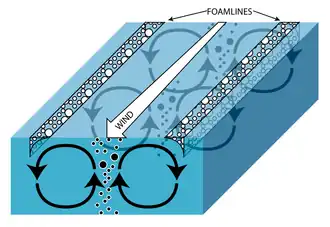
A lake ecosystem includes biotic (living) plants, animals and micro-organisms, as well as abiotic (nonliving) physical and chemical interactions.
Lake ecosystems are a prime example of lentic ecosystems. Lentic refers to stationary or relatively still water, from the Latin lentus, which means sluggish. Lentic waters range from ponds to lakes to wetlands, and much of this article applies to lentic ecosystems in general. Lentic ecosystems can be compared with lotic ecosystems, which involve flowing terrestrial waters such as rivers and streams. Together, these two fields form the more general study area of freshwater or aquatic ecology.
Lentic systems are diverse, ranging from a small, temporary rainwater pool a few inches deep to Lake Baikal, which has a maximum depth of 1740 m. The general distinction between pools/ponds and lakes is vague, but Brown states that ponds and pools have their entire bottom surfaces exposed to light, while lakes do not. In addition, some lakes become seasonally stratified (discussed in more detail below.) Ponds and pools have two regions: the pelagic open water zone, and the benthic zone, which comprises the bottom and shore regions. Since lakes have deep bottom regions not exposed to light, these systems have an additional zone, the profundal. These three areas can have very different abiotic conditions and, hence, host species that are specifically adapted to live there. (Full article...)